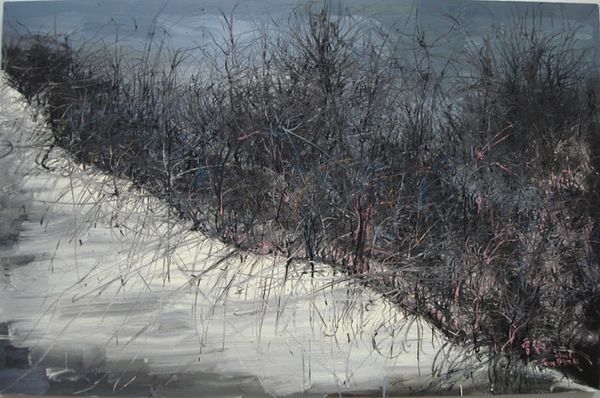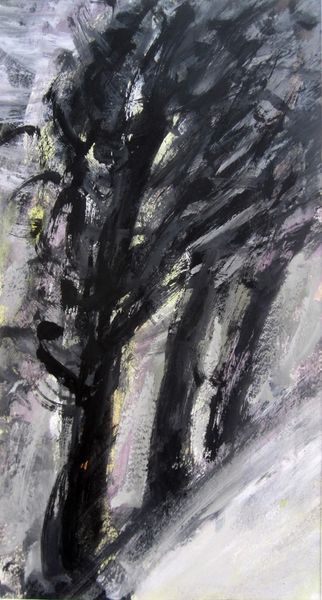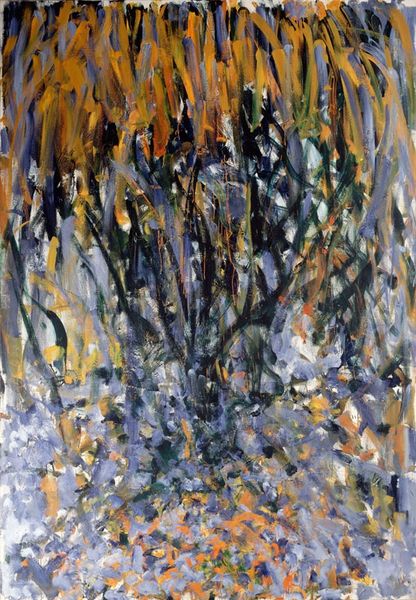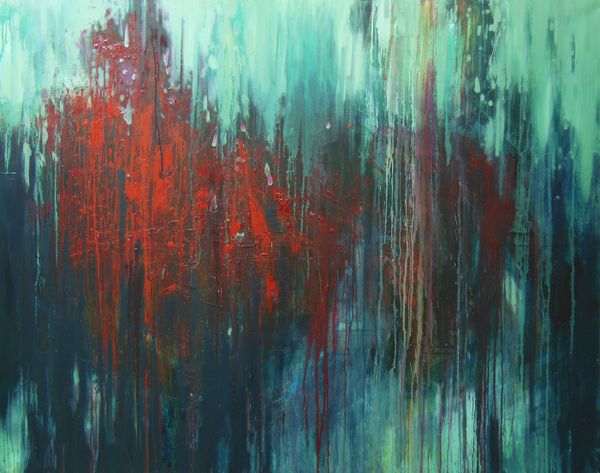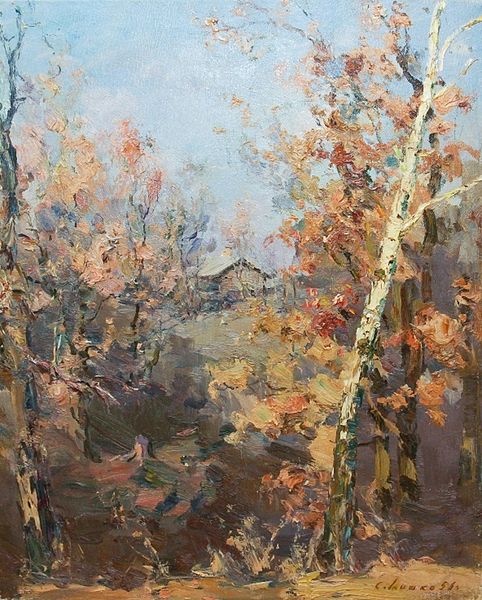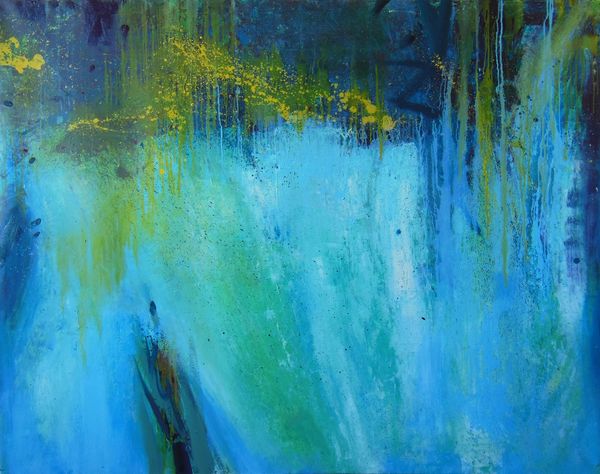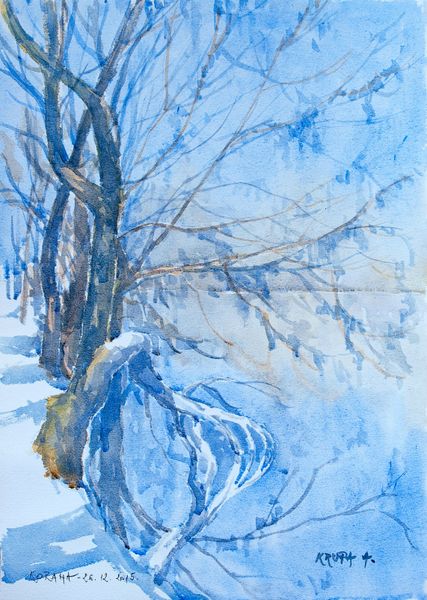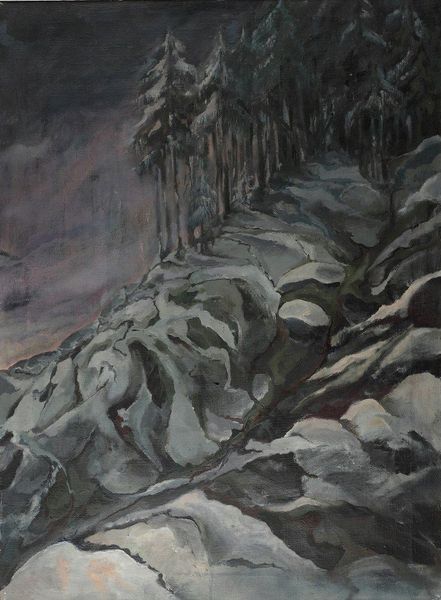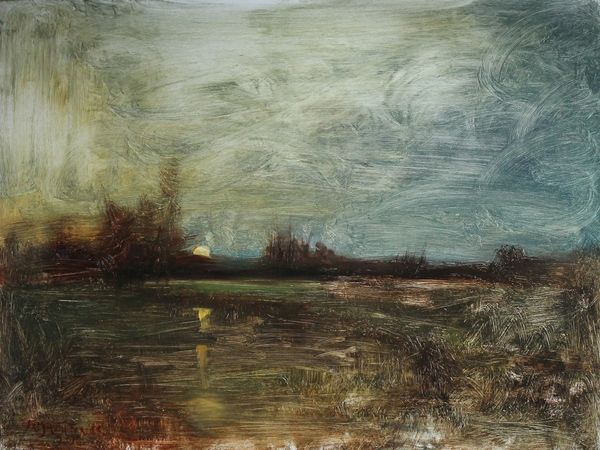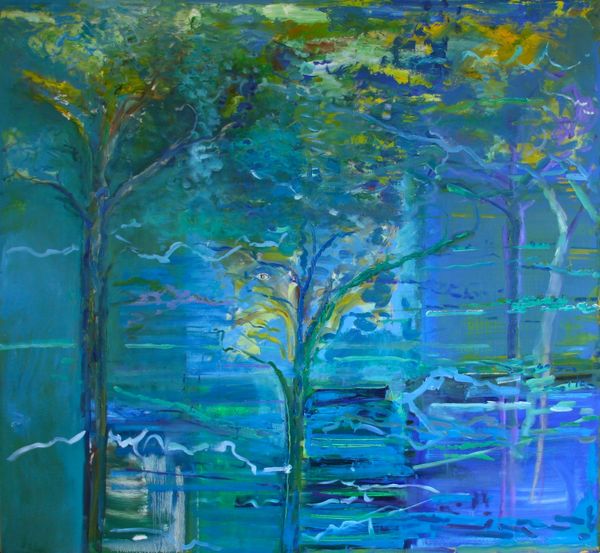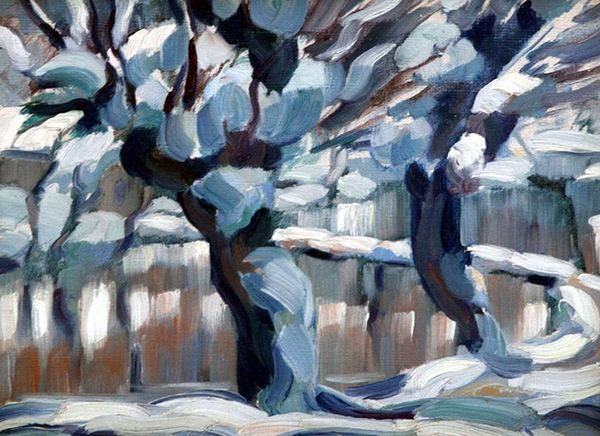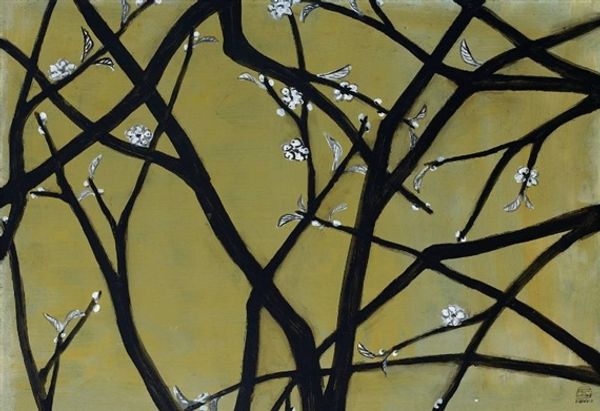
Copyright: Adrian Ghenie,Fair Use
Adrian Ghenie's painting, titled "Persian Miniature", presents a fascinating contradiction through its use of oil on canvas. The title makes reference to the Persian tradition of miniature painting, which served as a critical form of courtly art from the 13th to 16th centuries. These were commonly used in illuminated manuscripts, which were typically commissioned by wealthy patrons or political elites. In contrast, the painting is executed in a decidedly modern style and, with the figure wearing camouflage in a wintry forest, the artist creates something that stands apart from its namesake. Ghenie's choice of title highlights how the art world frames and categorizes creative expression, and, as historians, we must ask ourselves what cultural assumptions are at play when an artwork is produced and consumed. Examining exhibition catalogues, critical reviews, and the artist's own statements may offer insight into the historical and cultural significance of "Persian Miniature."
Comments
No comments
Be the first to comment and join the conversation on the ultimate creative platform.
